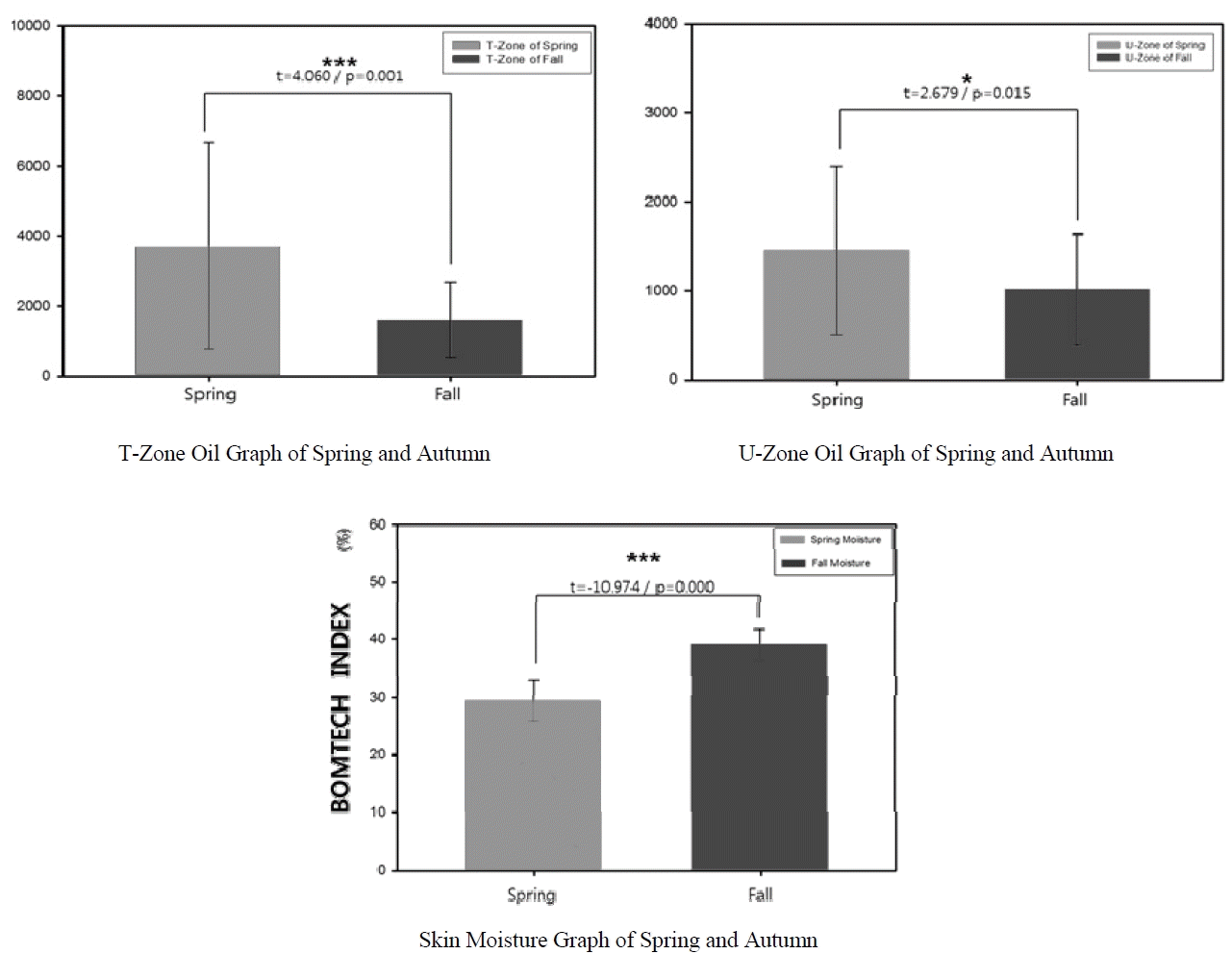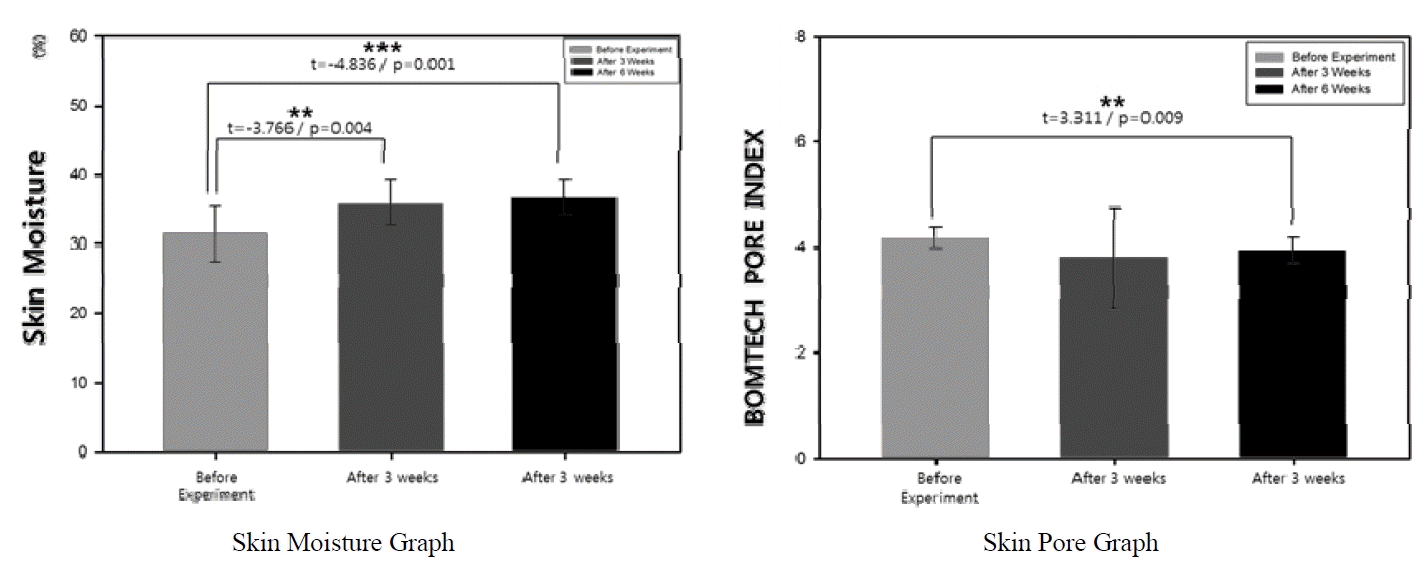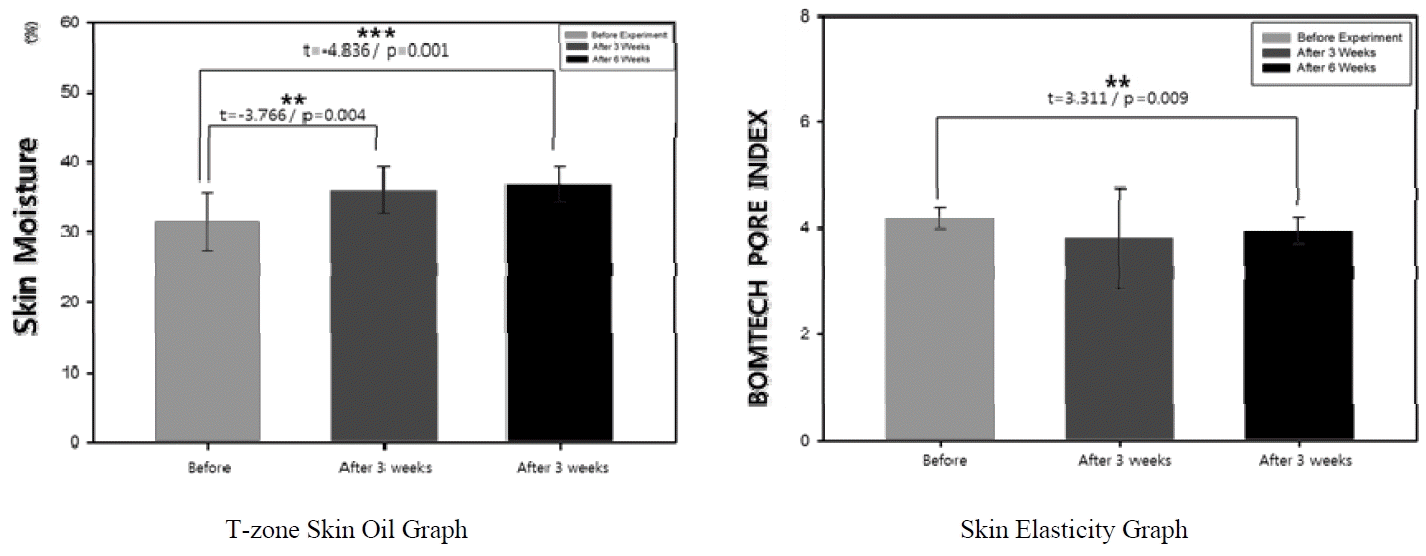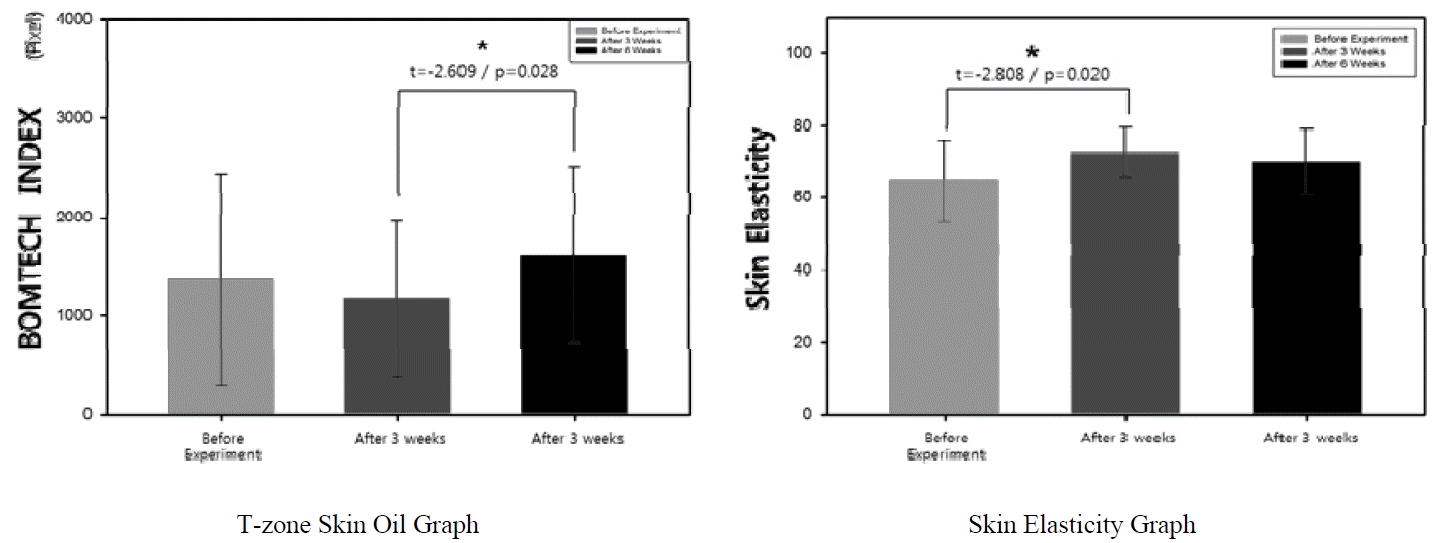Study of Skin Characteristics in Spring · Autumn and seasonal efficacy of Seosiokyongsan CP soap
Article information
Abstract
Objectives
The condition of the skin is greatly influenced by seasonal changes. We wanted to know the seasonal change of skin condition and to find out the difference in the efficacy of Seoshiokyongsan (SSOOS) CP soap in spring and autumn. We are to help people who use soap to make a wise choice in choosing a cleanser according to the season.
Methods
To investigate the seasonal skin condition, this experiment was conducted to examine the skin condition of spring and autumn in 20 students at A university. To compare the seasonal efficacy of Seosiokyongsan (SSOOS) CP soap, we had skin test 10 students in spring and autumn. We made herbal fermented soaps using SSOOS and distributed them to experiment participants. We let them wash their face in the morning and evening for 6 weeks using herbal fermented soap. Prior to the experiment, their skin condition was checked and assessed using A-ONE Smart One-Click Automatic Facial Diagnosis System three times at 3-week intervals. After the experiment, the changes of skin were measured and analyzed through facial analysis test.
Results
In spring and autumn, the oil of T zone and U zone was significantly less and the water content was significantly higher in autumn than in spring. In the case of using the SSOOS CP soap, water content increased and oil content decreased in spring, oil content and elasticity increased in autumn.
Conclusion
There is a difference in the skin condition according to the season and SSOOS CP soap showed difference in efficacy in spring and autumn.
So we should pay attention to seasonal soap selection.







